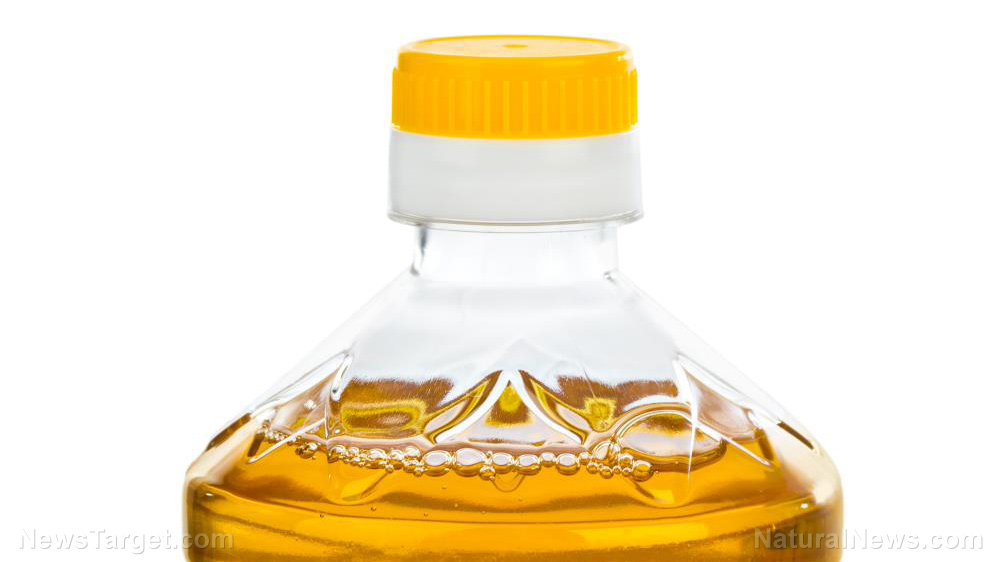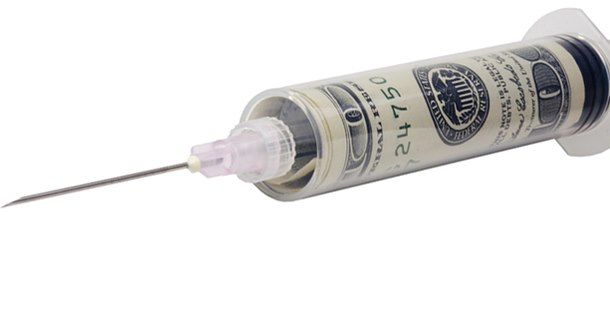The decades-long saturated fat SCAM to push toxic vegetable oils… here’s why you should be eating tallow instead of canola
01/26/2019 / By Isabelle Z.

One of the biggest areas of misinformation when it comes to food and nutrition is fats. Do you know which oils are good for you and which are bad? If you think you know, where did you get your information? Is it recent? Are sure you can trust your sources? The truth is that some of the oils many have long believed to be the healthiest have recently been exposed as toxic – yet word is slow to get out with so much money at stake.
Canola oil has become a mainstay thanks to marketing efforts to make it seem like the healthy choice, and its low price tag doesn’t hurt, either. However, natural health advocates who have long suspected it’s not as good for you as claimed recently got some long-overdue vindication as a study was released showing several of its serious dangers.
Not only can canola oil lead to the buildup of plaque in your brain that is a hallmark of Alzheimer’s, but it can also worsen memory loss and impact learning. Also, the chemical extraction process involves a solvent known as hexane. When hexane is heated during the extraction process, it destroys the omega 3s in it and creates trans fats, which have been linked to obesity and very dangerous heart effects like a higher risk of heart disease, type 2 diabetes, and stroke.
There’s also the fact that canola oil is made using genetically modified rapeseed, raising your risk of cancer and reducing your liver and kidney function. It can also raise triglycerides. The American Heart Association recently admitted that it raises your risk of death from stroke and heart attack.
So why is this oil so heavily used and promoted? In short, it’s highly profitable, and Big Food has a remarkable amount of influence over the FDA and the CDC.
Tallow: A surprisingly healthy fat
One fat that doesn’t get as much attention – and may be far better for you – is tallow. This saturated fat was the primary fat used to cook in the past because it has a very high smoke point. It lost popularity as heavily biased studies pointed to a link between saturated fats and heart disease. Of course, we now know that cardiovascular disease stems from chronic inflammation that results from diets that are high in trans fats and refined sugars. Indeed, thanks to the vegetable oil industry’s efforts, heart disease and cardiovascular health problems skyrocketed as people eschewed saturated fat in favor of the more dangerous trans fats.
Tallow is made from cattle fat, and it is comprised of 50 perfect saturated fat, 42 percent monounsaturated fat, and 4 percent polyunsaturated fat. It has a dry and waxy texture and looks like a cross between butter and coconut oil. It’s made by rendering suet, the fatty layer surrounding the animal’s organs.
What makes this a good choice for cooking is that its high temperature resistance means it won’t oxidize and form free radicals when exposed to heat like the more delicate polyunsaturated fats. These free radicals can cause the inflammation that leads to cardiovascular disease and other chronic health problems, so it’s something you want to avoid at all costs. Just how high can you heat tallow? Its smoke point is 420 degrees Fahrenheit. Compare this to coconut oil at 350 degrees and butter at 250 degrees. It has the added benefit of imparting a rich flavor to foods.
Tallow’s many benefits
Adding tallow to your food can raise the healthy fats you consume, which facilitates your body’s absorption of fat-soluble vitamins that support your immune system like A, D, E and K. Its rich conjugated linoleic acid (CLA) content means it can help your body to burn fat – quite the opposite effect of canola oil.
It can even help to fight cancer. Researchers from the University of California, Davis, have found that it can stop the development of metastatic breast tumors. They discovered that mice who ate CLA along with beef tallow suffered from fewer metastatic breast tumors than a group that consumed a blend of vegetable fats.
It’s also great for your skin. In fact, it was long used as a type of body butter. Its fat makeup means it works quite well at repairing and regenerating skin. It doesn’t have an amazing scent, but mixing in a few drops of essential oils like lavender or peppermint can solve that problem nicely. It’s also a key ingredient in soap making for this reason.
Tallow is remarkably affordable, and some butchers are happy to give it away. The stigma surrounding animal fats persists among the uninformed, so it’s not in very high demand. You can also render tallow yourself at home, giving you the peace of mind of knowing exactly where your fat came from. It’s important to remember, however, that you need to get tallow from grass-fed, organic cows to avoid exposure to toxins.
If anything you’ve just read comes as a surprise, it should now be clear to you just how much misinformation there is circulating around the topic of healthy fats and oils. If you still have canola oil lurking around your pantry – and be sure to check the labels of prepared foods, too, as it’s a popular ingredient – it’s time to kick it to the curb and replace it with healthier alternatives like tallow.
Sources for this article include:
Tagged Under: canola oil, CLA, healthy fats, Natural Alternatives, oil, prevention, tallow, toxic ingredients


















